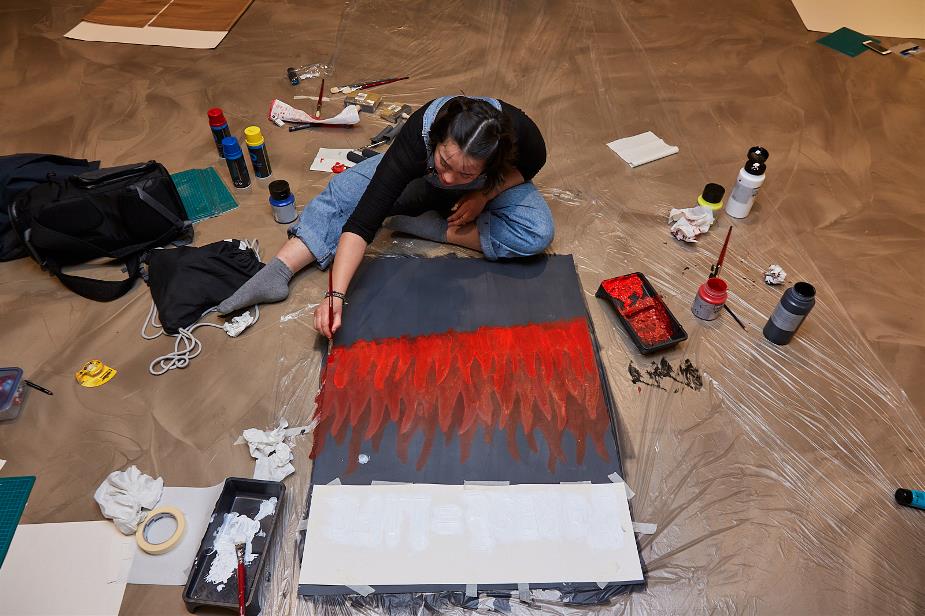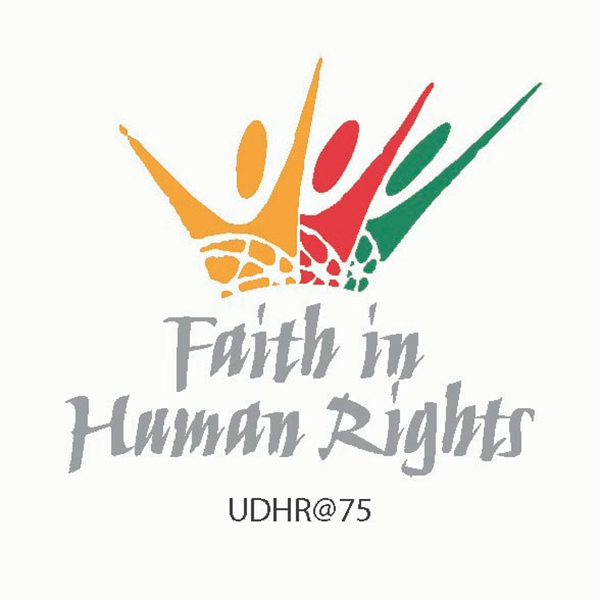Art and human rights: a powerful combination
16 March 2022
Pablo Picasso, Billy Holiday, Banksy, Dave Eggers, Loesje, Jeroen van Merwijk. One lived in the last century, the other is living in this one. One is a singer, the other is a writer or a painter. They are all artists who...

Pablo Picasso, Billy Holiday, Banksy, Dave Eggers, Loesje, Jeroen van Merwijk. One lived in the last century, the other is living in this one. One is a singer, the other is a writer or a painter. They are all artists who draw attention in their works to the significance of human rights. There are many of them, globally and in all forms of art. 26 S students at THUAS are delving into the relationship between art and human rights as part of the minor 'Peace building, justice & human rights’ project, which got under way in January. They are immersing themselves in art created by others and will create posters about human rights themselves. And you will be able to see the results for yourself at the end of this month!
Art is a powerful tool for advocacy and for making people aware of human rights. It can bridge language and even cultural barriers. For example, look at the painting Picasso created in 1937 about the bombing of the Spanish city of Guernica. You may not know anything about the Spanish Civil War, but when you look at it, it brings out emotions, even though almost 100 years have passed since then. The painting does not tell you the whole story, but it does encourage you to think, to explore the subject further, and to dedicate your time and vision to it.
Raising awareness
Mi Jung van der Velde, Lecturer International Public Management, is supervising the minor: “People often think of international treaties, human rights lawyers and human rights organisations such as Amnesty International when they think of human rights. And, of course, they are also present in our education. The Vredespaleis (“Peace Palace”) is located on our own doorstep, so to speak, and our students do internships and practical assignments with all types of international human rights organisations. We do think, however, that it is important that our students also consider what human rights mean in our daily lives for people like you and me. And that human rights are not static, but are also dependent on our own vision.” The choice to join forces with art was made quickly. “Art is not only a powerful means of expressing yourself, it also helps to raise awareness in others,” says Mi Jung, who herself is a keen dancer.
Forming your own opinion
Students will create a poster during the minor, based on a theme of their choice. Artist Johan Nieuwenhuize is providing support for students here. “Whoever creates art is exercising the right of their freedom of expression. There are still countries around the world where this right is being violated, where artists cannot dance or make music at liberty" says Johan. “There are lots of artists who reflect the theme of human rights in their work. They are giving their audience the opportunity to think for themselves by sharing their vision. This is what I would like to pass on to the students: the fact that art is a way to convey a message, where you give the viewer the opportunity to uncover the message and the freedom to interpret it individually.”
Making children visible
Margarita Meier is a 4th year International Public Management student, who is taking the minor course and who loves art. She herself is a painter and likes to go to museums: “This minor combines two passions of mine. I have been a volunteer at UNICEF since the beginning of my studies, and this is the international organisation that helps children overcome poverty, disease, violence and discrimination all over the world. And I've been studying art for 12 years. I have chosen children's rights as the theme for my poster. Children's stories are often never heard of when people look at all the wars, conflicts and violence in our world. This hurts me and I want to draw more attention to it. Children do not have a voice in the conflicts; however, it is also about their lives and their future.”
Unbelievably unfortunate
Hisjaam Bhikhie, a 3rd year Communication & Media Design (CMD) student, is hoping attention is paid to children’s rights. “I want to draw attention to the rights of all the children around the globe and in special, child refugees. Children cannot express what their needs are and what they are looking for. This is true of every child; however, it is even harder for children on the run or who are far from their own country due to unsafe conditions. They go through horrible conditions with often, no roof over their heads, no safe place to sleep, no access to clean water, food, education, and the list just goes on. I don't think these children deserve that. It is in fact down to pure luck: the place where your cot is. They are unbelievably unfortunate and have just as many rights as children who can grow up in peace and with access to education and care.” As a CMD student, he also sees opportunities to make people aware of human rights through online campaigns for example, as well as doing so through art.
Women’s rights
Hannah Kerkhoff, a 2nd year International Communication Management student, wants more attention paid to women’s rights. “I grew up under privileged circumstances. Actually, in the proverbial perfect bubble. And I have always taken human rights and also the freedom of expression for granted. That perfect bubble burst when I started travelling. I was actually exposed to violations of human rights. And I realised what it means when people don't have freedom of speech. The minor is a good way to learn how to raise awareness, both in yourself and with your audience.” Hannah is going to make a poster about women's rights. “I lived in a very poor area of Egypt for a while. It seemed as if time stood still. The women had no right to work freely, and they could not make their own decisions. That made a major impression on me. I then realised how much freedom and the right to develop yourself are worth.”
Will you come and see?
All the posters can be viewed at THUAS as of 4pm on Thursday 24th March (between Kennedy Room and Mandela Room). The exhibition will be opened by Saskia Bruines, an alderman for Economy, International Affairs, and Services at the Municipality of The Hague. This will also be the case (again) at the Faith In Human Rights festival that the World Citizenship research group is organising at the end of this year. Johan: “You cannot expect an immediate impact if you want to attract attention to human rights through art. You communicate indirectly with art, and this takes time. However, this does not change the fact that the impact of art can be major. As a spectator you have to think and form your own opinion about what you see or hear. You build a relationship with the artwork, and you may have to view the artwork over and over again. And you gradually form your own opinion as a spectator, as you become aware of how you are looking at it.”
Do you wish to hear, see or read more?
- Read more about Pablo Picasso’s ‘Guernica’ painting, one of the most powerful anti-war paintings of all time.
- Listen to ‘Strange Fruit’ by Billy Holiday from 1939, which is also known as one of the first real protest songs in history.
- Read ‘The Circle’ by Dave Eggers, a novel about social media, transparency, privacy and freedom. It has also been released as a film!
- Look at (and read more about) Banksy’s artwork on the subject of the French government’s refugee policy.
- Take a look at Loesje’s posters (in Dutch) about human rights.
- Listen to Mensenrechten zijn van iedereen’ (“human rights belong to us all”), which was written by Dutchman Jeroen van Merwijk.
Want to know more?
- For more information about human rights, please go to the website of the Netherlands Institute for Human Rights.
- Do you want to join the fight for human rights? If so, you can reach out to organisations such as IofC Netherlands and Amnesty International Netherlands.
About Faith in Human Rights
The IofC programme Faith in Human Rights is getting ready to celebrate the 75th anniversary of the Universal Declaration of Human Rights, on December 10, 2023. They have already booked the Peace Palace in The Hague as the venue.
